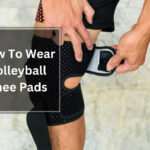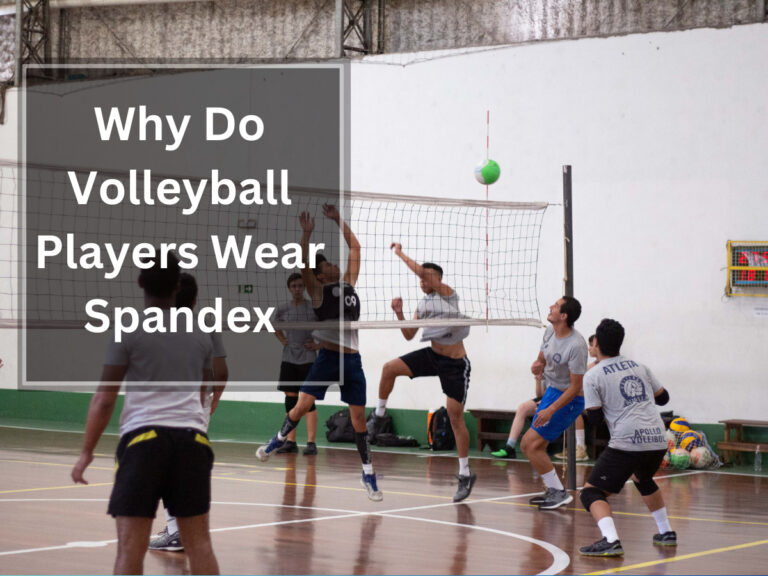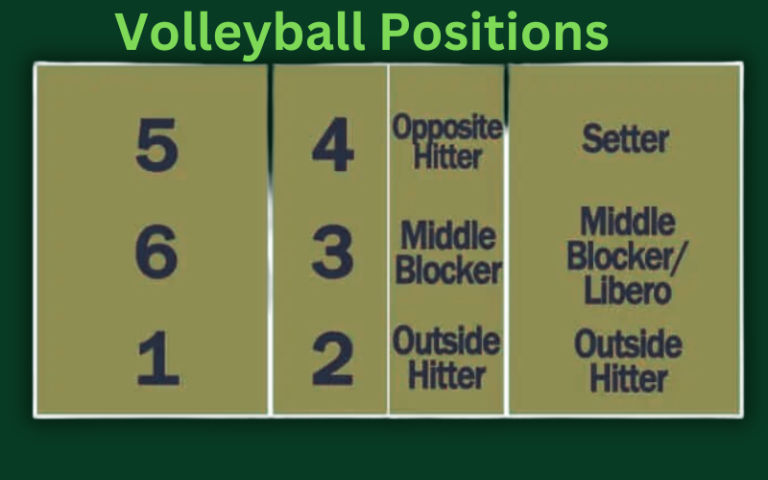Libero Drills for Beginners – Training Guide and Tips

Are you ready to take your libero skills to the next level? Well, look no further because this article is packed with a wide range of drills specifically designed for liberos like you. Whether you’re a beginner or an experienced player, these drills will help you improve your digging, passing, and overall defensive play on the volleyball court.
From wall digs to knee digs, from slow motion rolls to quick feet drills, we’ve got it all covered. These exercises focus on enhancing your footwork, agility, coordination, focus, and multitasking abilities.
Table of Contents
Highly Effective Libero Drills
As someone who has been through countless practices and games as a libero myself, I can tell you that consistent practice and patience are key in becoming a skilled player in this specialized position.
So grab your gear and get ready to dive into these exhilarating drills that will make you stand out as a libero on any team.
Footwork and Agility Drills
The libero drills mentioned above focus on developing footwork and agility. These drills allow players to cover the entire back row with lightning speed movement, bending, stretching, and falling to reach the ball.
These drills are designed to improve speed, balance, and stability. They also help with defensive positioning and movement. By practicing these drills consistently, liberos can enhance their ability to quickly react to the ball’s trajectory and make precise movements to get into position for a dig or pass.
The emphasis on footwork in these drills helps liberos maintain a low ready position. It also enables them to move laterally and diagonally with ease. This combination of speed and agility is essential for covering a large area of the court efficiently and effectively as a libero.
Passing and Digging Drills
To enhance passing and digging skills, players can engage in various practice activities akin to sharpening their reflexes on the court. Here are some footwork and agility techniques that will improve your defensive positioning and serve receive strategy:
- Ladder Drills: Set up a ladder on the ground and practice quick feet movements by stepping in and out of each rung. This will improve your foot speed and agility.
- Defensive Positioning Drills: Work on getting into the correct defensive position quickly after every pass or dig. Practice moving laterally, forward, and backward while maintaining a balanced posture.
- Serve Receive Strategy: Focus on communication with your teammates during serve receive drills. Call out who will take the ball to avoid confusion and ensure accurate passes.
By incorporating these drills into your training routine, you’ll develop better footwork, enhance your defensive positioning, and improve your overall serve receive skills as a libero. Keep practicing consistently to see progress in your game!
Reaction and Quickness Drills
Incorporating reaction and quickness drills into your training routine will greatly enhance your footwork and agility on the volleyball court. Speed and agility training is essential for a libero to excel in their role.
By focusing on developing reaction time, you can improve your ability to quickly respond to fast-paced situations during a game. Quickness and decision-making skills are also crucial for a libero, as they need to make split-second decisions on whether to dig or set the ball.
These drills will help you sharpen your reflexes and make faster, more accurate movements on the court. With consistent practice, you’ll be able to move quickly and efficiently, making you a valuable asset to your team’s defense.
Communication and Teamwork Drills
Enhancing communication and fostering teamwork on the volleyball court is like orchestrating a symphony, where each player’s voice harmoniously blends with others to create a cohesive and powerful performance. To cultivate effective communication and positioning skills, here are three essential drills:
Communication and Positioning Drills: These drills focus on improving verbal cues and nonverbal communication between players. They involve calling out specific positions, coordinating defensive coverage, and communicating switches or adjustments during gameplay.
Partner Passing Drills: These drills emphasize accurate passing and effective communication between teammates. Players work in pairs, practicing various passing techniques while maintaining constant dialogue to ensure proper ball placement.
Defensive Transition Drills: These drills simulate game-like scenarios where players transition from defense to offense quickly and efficiently. Focus is placed on effective communication to determine who should cover the attacker or setter, ensuring seamless defensive transitions.
By incorporating these communication and teamwork drills into training sessions, teams can foster a strong sense of unity while enhancing their overall performance on the court.
Serve Receive Drills
Mastering the art of serve receive is crucial for dominating the volleyball court. As a libero, I have honed my serve receive technique through various drills and practice sessions.
One key aspect of successful serve receive is communication strategies. Clear and concise communication with my teammates allows us to anticipate and react effectively to incoming serves. We use hand signals, verbal cues, and even eye contact to ensure seamless coordination on the court.
Additionally, decision making in serve receive is paramount. I have trained myself to quickly assess the trajectory and speed of the ball, making split-second decisions on whether to pass or let a ball go out of bounds. This ability comes with experience and repetition in serve receive drills, allowing me to confidently control the game from the back row.
Dive and Roll Drills
Developing strong diving and rolling skills is crucial for a libero to excel in the game of volleyball. As a seasoned libero, I understand the importance of mastering the rolling technique and defensive positioning.
The dive and roll technique allows us to make accurate digs while maintaining control and stability on the court. When executing a dive or roll, it is essential to focus on proper form and technique to minimize the risk of injury and maximize effectiveness.
By practicing these drills regularly, liberos can improve their agility, reflexes, and quick recovery from dives or rolls.
It’s important to remember that perfecting these skills takes time and dedication, but with consistent effort, we can become reliable defensive anchors for our team.
Blocking and Blocking Footwork Drills
Now that we have covered the importance of dive and roll drills for liberos, it’s time to shift our focus to another crucial aspect of libero play: blocking.
As a seasoned libero, I understand the significance of mastering blocking technique, footwork, and strategy. To improve your blocking skills, incorporate various blocking technique drills into your training regimen.
These drills will help you develop a strong and effective block by focusing on hand positioning, timing, and reading the hitter’s approach.
Additionally, don’t forget to work on your blocking footwork through specific drills that emphasize quick lateral movement and proper positioning at the net.
Lastly, engage in discussions with coaches and teammates about blocking strategies to enhance your overall understanding of this essential defensive skill.
Remember, becoming a well-rounded libero requires continuous improvement in all aspects of the game.
Game-like Situational Drills
Engage in dynamic and diverse game-like situational scenarios to enhance your defensive skills as a libero. These drills simulate real-game situations, allowing you to develop quick reflexes, improve decision-making, and sharpen your defensive techniques.
Incorporate serving and receiving drills that replicate the pressure of a match. Practice serve-receive formations with teammates, communicating and calling out who will receive the serve. This enhances your serve receive skills, communication abilities, and adaptability on the court.
Additionally, focus on defensive drills that emphasize reaction time and digging technique. Work on forming a solid platform with your forearms through swift defensive digs. These drills prepare you for high-pressure scenarios during games.
By incorporating these game-like situational drills into your training routine, you will become more proficient in both serving and receiving while also developing strong defensive skills as a libero.
Frequently Asked Questions
What are some common mistakes to avoid when practicing libero drills?
When practicing libero drills, it’s important to avoid common mistakes that can hinder your progress. One mistake is neglecting decision-making skills, which are crucial for a libero. Additionally, don’t skip warm-up exercises as they help prevent injuries and prepare your body for the drills.
How can liberos improve their decision-making skills during drills?
To improve decision-making skills during drills, I recommend incorporating game-like simulations that replicate real match situations. By providing decision-making cues and analyzing different game scenarios, liberos can develop their ability to make quick and effective decisions on the court.
Are there any specific warm-up exercises that liberos should do before starting these drills?
Before starting these drills, liberos should perform warm-up exercises to prepare their bodies and minds. These exercises can include dynamic stretching, footwork drills, and reaction time exercises. Training aids such as agility ladders and resistance bands can also be used to enhance performance.
Can these drills be modified for players of different skill levels?
Yes, these drills can definitely be modified for players of different skill levels. By adjusting the difficulty or intensity of the drills, we can challenge advanced players while still benefiting beginners. It’s important to tailor the drills to each player’s abilities to ensure growth and improvement.
Are there any specific training aids or equipment that can enhance the effectiveness of these drills?
When it comes to enhancing the effectiveness of libero training drills, using training aids and equipment can make a significant difference. Incorporating tools like resistance bands, agility ladders, and serving machines can help improve skills and performance.










